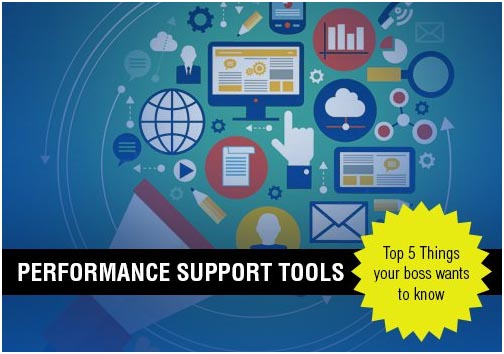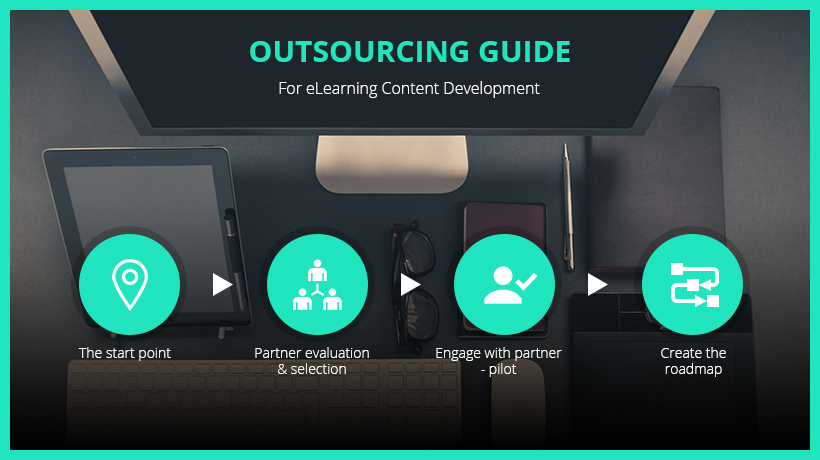
Given the evolving needs of a global workforce and L&D landscape, key learning technology trends, such as personalized learning, virtual reality simulations, and AI-driven content delivery, will play a crucial role in L&D in 2024.
Selecting the Right Learning Technology Maximizes Training Impact
The emphasis in 2024 will be on maximizing the return on investment (ROI) and training impact through the use of the right learning technology and personalized learning. Organizations will seek to deploy adaptive learning platforms, interactive simulations, and AI-driven content delivery to enhance learner engagement, knowledge retention, and overall learning outcomes. Deploying the right technology will help organizations:
Enhance Learner Engagement
Organizations will increasingly use gamification, virtual rewards, and real-time feedback to make learning interactive, increase learner interest, and encourage greater participation in the learning process.
A current popular trend in learning technology is to use learning platforms with gamification techniques and interactive quizzes to successfully improve overall learning experience. Furthermore, incorporating virtual reality (VR) into training and simulations, organizations can provide immersive and realistic scenarios for greater knowledge retention and learner engagement.
Improve Learning Outcomes
Personalized and adaptive learning technologies enhance learning efficacy by allowing adjustments to the difficulty and pace of training. As a result, learners can access customized training that addresses unique learning needs and improves retention.
Measuring learner performance post the integration of technology on key indicators, such as the level of engagement, knowledge retention, and skill proficiency, enables organizations to continuously improve learning initiatives.
Enhance Efficiency in Training Delivery
Implementing online learning platforms, virtual classrooms, and adaptive learning can make training cost-effective. Using technology to automate administrative tasks can streamline learning processes, reduce logistical expenses, and deliver high-quality training at optimized costs.
In contrast to traditional instructor-led training methods that rely on printed learning materials, technology-enabled training methods are more accessible and device-agnostic. Technology-driven learning allows tracking and analysis of learner progress, which helps create a more interactive and personalized learning environment.
AI enhances learning effectiveness through the use of adaptive learning platforms. Adaptive platforms use machine learning algorithms to tailor content according to learner needs and preferences. Through AI-driven chatbots and virtual assistants, organizations can provide learners with real-time support and personalized guidance. Further, predictive analytics in AI helps analyze historical data to gain insights that can forecast learner performance and optimize the effectiveness of training initiatives.
Target Scalability and Flexibility
Cloud-based and mobile learning solutions enable organizations to offer scalable and flexible learning options for anytime, anywhere, and device-agnostic access to learning. In addition, cloud facilitates content storage, real-time updates to learning content, and collaboration.
With the right technology, organizations can scale training initiatives to reach a larger audience and accommodate the dynamic requirements of a growing workforce or changing skill requirements.
Ensure Inclusivity and Accessibility
By ensuring that learning is accessible to a global audience without compromising efficiency or quality, technology can empower organizations to build a more resilient and skilled workforce.
Combining learner-centric design with tools such as screen readers, alternate text for images, multimedia content, and readable fonts, can help organizations develop accessible and inclusive digital learning content for learners with varying learning needs.
Prepare for Future Learning Challenges
Aligning learning strategies with learning technology trends, adaptive learning platforms upskill learners with hands-on and experiential learning. These upgraded skills enable learners to confidently face future changes in the workplace.
Leveraging real-time data analytics, organizations can continuously review and refine learning strategies to upskill the workforce in line with the evolving professional landscape.
With access to cutting-edge training resources and AI-driven learning modules, L&D professionals can get practical exposure to the latest training methodologies. This exposure can help L&D teams design, deliver effective learning, and keep pace with the ever-changing skill requirements.
Learning Technology Trends in 2024
2024 promises to witness greater technology adoption. The learning technology trends this year include greater use of immersive learning technologies like virtual reality and augmented reality, AI-driven learning personalization, and predictive modeling to make training more effective. The learning technology trends in 2024 include:
-
AI and Learning
AI will continue to take center stage in 2024. L&D teams will increasingly leverage AI for strategic planning, delivering personalized learning, curating relevant content, and streamlining administrative tasks.
-
Employee Experience AI Platforms
AI-driven platforms are recognized for enhancing learner engagement and streamlining the learning experience. By facilitating access to comprehensive and interconnected content, integrated platforms will enable learners to enhance skills, while improving engagement and knowledge retention.
-
Personalized Career Pathways
Being well-informed of the latest learning technology trends, organizations can customize personalized learning paths for learners, deliver adaptive content, and develop skills that can help learners optimize professional growth.
-
Immersive Learning and Extended Reality Technology
Virtual Reality (VR), Augmented Reality (AR), and AI avatars enhance the effectiveness of learning by providing learners with hands-on learning and personalized feedback. This year, more focus on extended realities will enable different industries the opportunity to reach new learning levels of excellence.
-
Technology-enabled Simulations
Combining AI and training simulations can offer learners an immersive and interactive learning environment, facilitating knowledge gain in a risk-free environment. Utilizing dynamic elements, adaptive scenarios, and personalized feedback elevates learner engagement and enables learners to use the learnings in real-world situations.
-
Technology-enabled Collaborative Learning
Technology-driven platforms and tools, such as video conferencing and collaborative document editing, enable learners to interact and collaborate in a shared digital space in real-time.
-
Performance Data Dashboards
Data analytics facilitate the collection and analysis of performance metrics, engagement patterns, and assessment of results to help L&D teams tailor learning strategies and inform improvements in learning strategies.
-
AI-powered Learning Environments
Advanced AI applications continuously analyze learner data to inform real-time updates to content delivery. These insights help adjust the learning environment to deliver personalized learning experiences and improve knowledge retention.
-
Adaptive Learning
Adaptive learning technologies employ algorithms to optimize learning experiences by dynamically tailoring content according to learner performance and preferences.
AI Revolution in L&D: Content, Delivery, and Measurement
The use of artificial intelligence and machine learning algorithms in L&D can transform content creation, delivery and measuring efficiency of training programs.
AI in Content Development
AI plays an important role in automating content creation. Natural language processing and machine learning algorithms enable L&D teams to generate, curate, and adapt learning materials for personalized and effective learning experience.
Artificial intelligence and machine learning algorithms analyze learner data, preferences, and performance, to provide insights that inform creation of personalized and adaptive content. AI facilitates content curation and fine-tuning of training materials to improve the overall effectiveness of learning.
AI in Content Delivery
Using AI in content delivery helps personalize learning experiences. Sophisticated machine learning algorithms analyze individual learner data, preferences, and behaviors that allow organizations to adjust content presentation, difficulty levels, and learning paths in real-time. AI helps ensure that each learner receives a customized educational journey through greater engagement and knowledge retention.
AI-enabled adaptive learning platforms are useful in creating bespoke training programs, according to each learner’s pace, preferences, and proficiency levels. For instance, role-playing platforms and coaching platforms leverage AI to simulate real-world scenarios, providing learners with interactive experiences, personalized feedback, and guidance. As a result, learners benefit from upgraded skills that find practical use in various professional scenarios.
AI in Learning Measurement
AI is being increasingly used to identify learning behaviors and assess learners’ progress. Using these insights, L&D can not only offer personalized feedback but also tailor interventions and optimize overall training outcomes.
AI has the ability to transform data into actionable insights that can drive the review and updating of learning strategies, thereby ensuring timely and relevant skill development for employees. AI can also predict future learning needs, enabling the L&D teams to develop targeted training programs that align with organizational needs.
Parting Thoughts
In 2024 and beyond, technology will continue to optimize learning through personalized, interactive, and more meaningful learning experiences. The latest learning technology trends encompass AI, machine learning, virtual reality, augmented reality, and predictive analytics. These technologies are useful in ensuring that learners acquire the relevant skills needed to adapt to the requirements of a dynamic workplace.
By selecting the right technology for learning initiatives, organizations not only stand to make learning accessible, inclusive, and personalized for the global workforce, but also gain a competitive edge with appropriately skilled and future-ready employees.
Learn how to harness AI and emotional intelligence to drive innovation in L&D and create superior learning experiences.
Download our latest research brief to find out how to leverage the power of AI to increase productivity, efficiency, and scale while ensuring learning experiences are emotionally intelligent.



